Editor’s note: In 2001, Eunice Johnson commissioned an ostrich feather coat and skintight 1930s-style beaded gown with a separate face-framing hood from Bob Mackie. Costume curator Virginia Heaven describes the ensemble as “part fairy princess, part Vegas showgirl, part Barbie doll.” In this post, curatorial assistant Alex Aubry takes us to meet Julie Benner and describes her efforts to preserve Mackie’s creation.
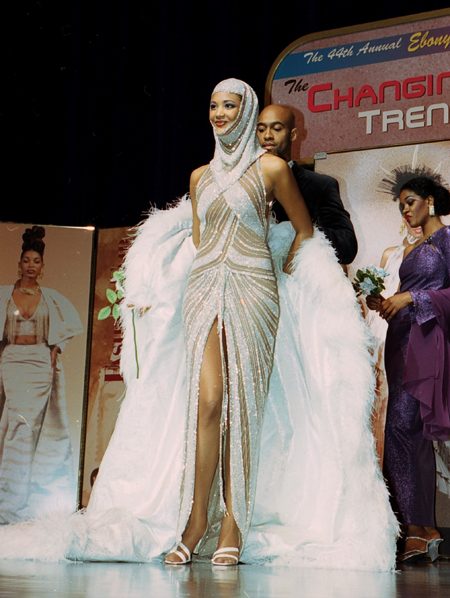
Mackie’s wedding ensemble on the Fashion Fair runway, 2001. Courtesy of Johnson Publishing Company, LLC
Textile conservator Julie Benner examines a custom-made wedding gown by Bob Mackie from fall 2001. To give the illusion of a nude body underneath, the formfitting heavily embroidered gown is lined in a sheer silk selected to match the model’s skin tone.
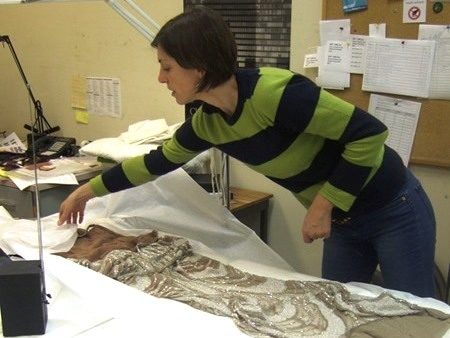
Behind-the-scenes images provided by Museum staff
Over time parts of the lining had torn or frayed. To prevent further fraying and fill in loss, Julie decided to support damaged areas with an overlay. To do so, she needed to find a material that matched the garment’s lining in terms of color, sheerness, and weight.
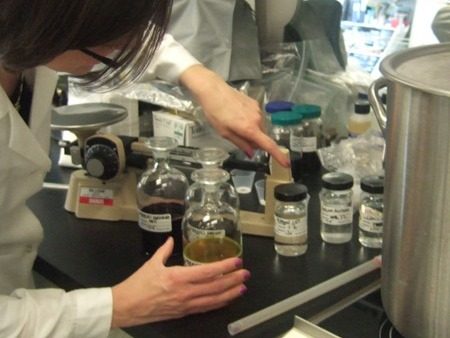
To achieve a color that matches an existing fabric as closely as possible, textile conservators will produce custom dyes designed to protect garments, not cause further harm. Julie began by mixing a combination of dyes and additives in which to tint strips of silk crepeline to compare to the garment’s existing lining.
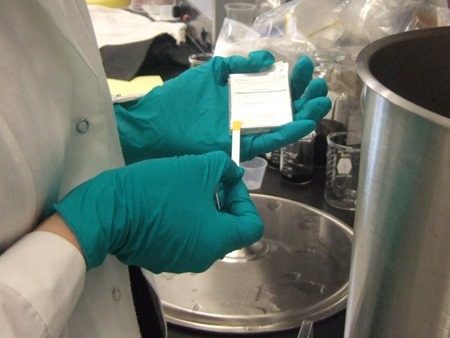
Before adding the silk crepeline to the sample dye baths, Julie determined the effectiveness of the dye by testing its pH level.
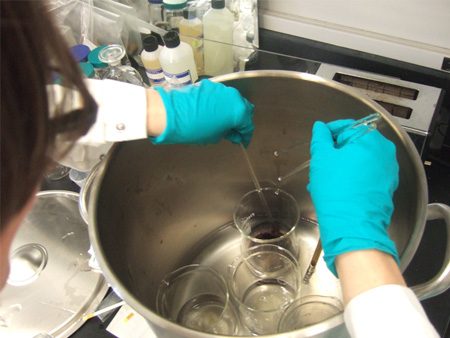
She then placed glass beakers containing the dye samples into a heated water bath and added the silk crepeline.
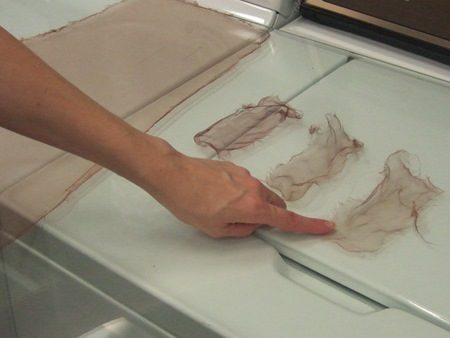
At the end of the dyeing process, Julie set the tinted fabric samples out to dry. Textile conservators may repeat this process several times, until they achieve the desired tone.
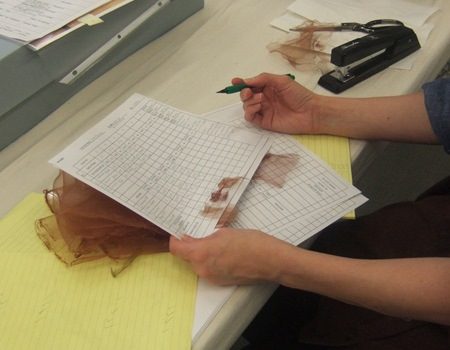
Throughout the process, Julie carefully noted the various combinations and quantities of chemicals and solutions used for each of the dyes. After selecting a tone, she consulted her notes to produce the correct dye in a larger quantity.
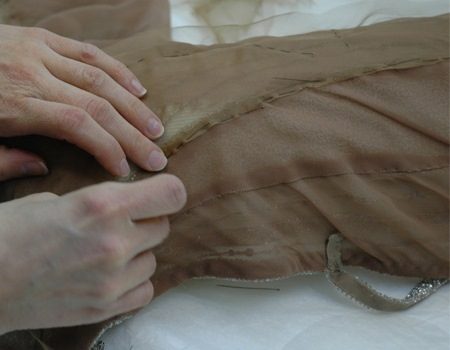
Having finished her custom-dyed silk crepeline overlay, Julie was ready to begin repairing the Bob Mackie gown. She carefully pinned the support fabric in place. Costume conservators prefer to use a very fine pin, often employed by taxidermists to mount insects, as standard pins may create holes in fabrics.
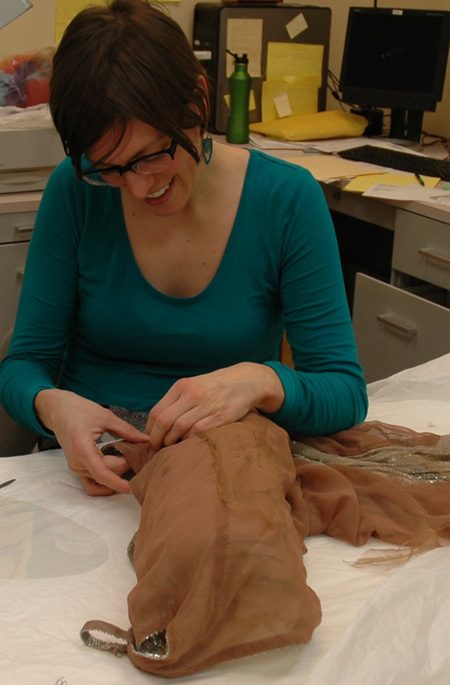
Julie then stitched the overlay into place, stabilizing the gown so that it would be strong enough to be out on exhibit.
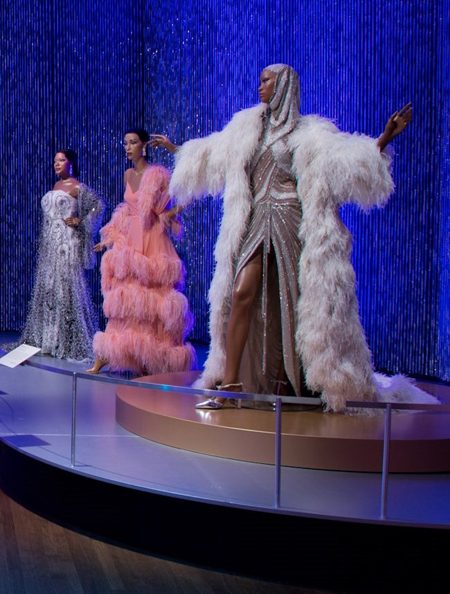
This beautiful wedding gown—carefully restored to its original glory—is on display in the exhibition Inspiring Beauty: 50 Years of Ebony Fashion Fair at the Museum through Sunday, May 11, 2014.
- Purchase the exhibition catalogue